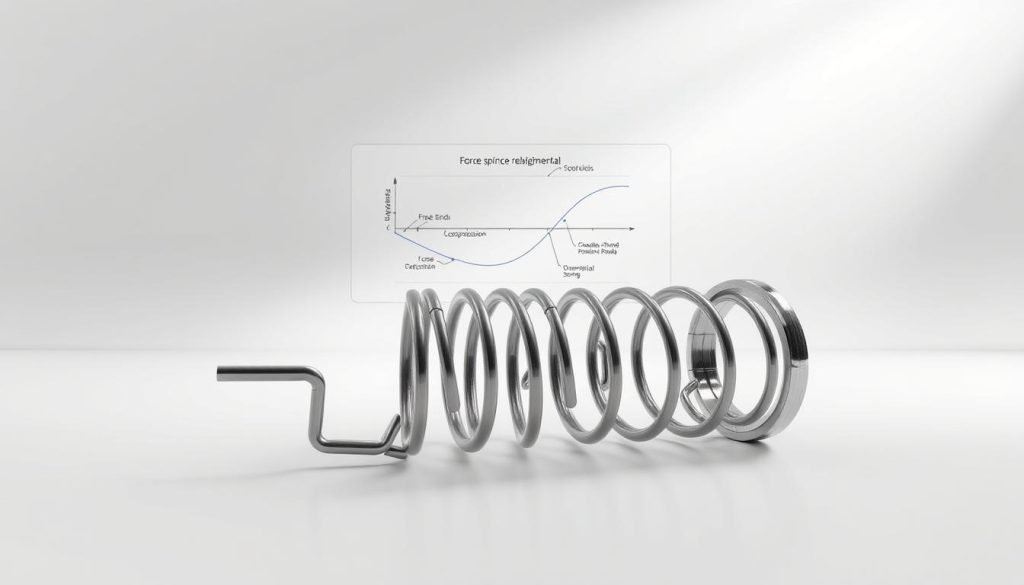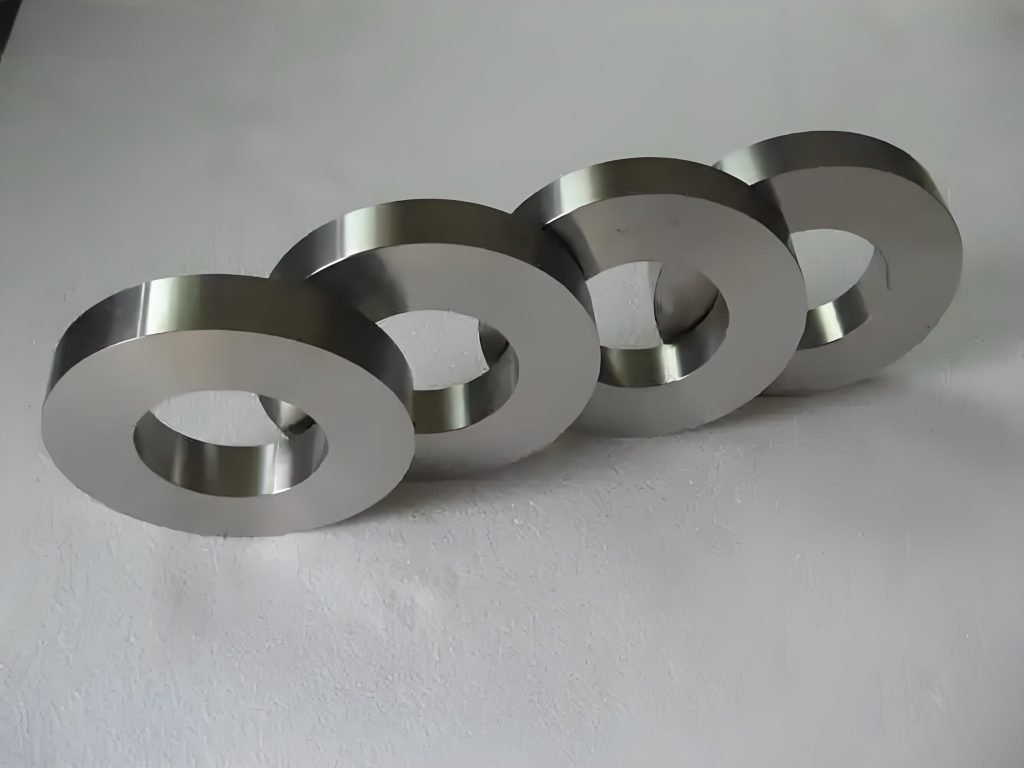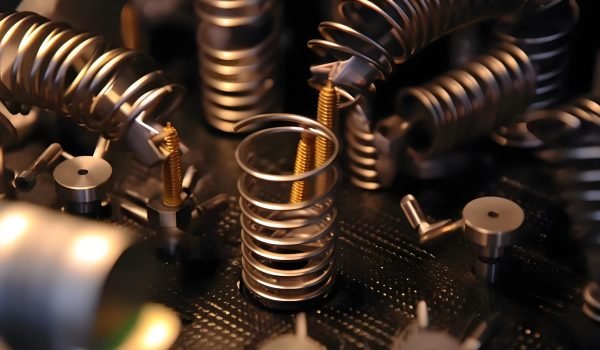Did you know that over 90% of mechanical devices rely on springs to function properly? These crucial components are found in everything from simple household items to complex industrial machinery.
springs are mechanical components that absorb applied loads elastically, returning to their original position once the load is removed. This property makes them ideal for applications requiring energy storage or shock absorption.
Understanding how springs work and the different types available is essential for selecting the right spring for your project. In this guide, we’ll explore the mechanics of springs and their various uses, helping you make informed decisions when designing or replacing springs in your equipment.
What Are Springs and How Do They Work?
A spring is typically a coiled or shaped piece of metal that can be compressed or extended. When a force is applied to a spring, it either compresses or stretches, storing energy in the process. The spring then returns to its original shape when the force is removed, releasing the stored energy. This operation is based on the spring’s ability to resist deformation and return to its equilibrium state.

Hooke’s Law: The Science Behind Spring Mechanics
Hooke’s Law is the fundamental principle governing the mechanics of springs. Formulated by Robert Hooke in 1678, it states that the force needed to extend or compress a spring by some distance is proportional to that distance. Mathematically, this is represented as F = -kX, where F is the force applied, X is the displacement, and k is the spring constant or rate. The law indicates that the spring’s restoring force acts in the opposite direction to the displacement, aiming to return the spring to its resting state.
The spring constant (k) is a measure of the spring’s stiffness, with higher values indicating a stiffer spring that requires more force to deform. Understanding Hooke’s Law is crucial for designing and applying springs in various engineering contexts, as it provides a predictable and reliable basis for their operation.
Functions and Importance of Springs in Engineering
Springs play a vital role in various engineering applications, serving multiple functions that are crucial for the operation of mechanical systems. You will find that their ability to store energy, control forces, and absorb shock makes them an essential component in many devices.
Energy Storage and Release
One of the primary functions of springs is to store energy, which can then be released as needed. This property is utilized in various applications, from simple toys to complex machinery, where springs provide a means of storing and releasing energy efficiently.
Force Control and Motion Management
Springs are also used to control forces and manage motion in mechanical systems. By providing a resistive force, springs help to regulate the movement of components, ensuring smooth operation and preventing damage from excessive motion.
Shock Absorption and Vibration Dampening
In addition to energy storage and force control, springs are crucial for absorbing shock and dampening vibrations.
For instance, in automotive suspension systems, springs play a key role in isolating the vehicle body from road irregularities, thereby enhancing comfort and safety. They work in conjunction with dampers to control oscillations, providing a smoother ride and protecting sensitive components from damage.
Major Types of Springs and Their Applications
The world of springs is diverse, encompassing multiple types designed to serve specific purposes in engineering and everyday applications. Understanding these different types is crucial for selecting the right spring for your specific needs.
Compression Springs
Compression springs are designed to operate with a compressive load, making them ideal for applications where force needs to be applied in a compact space. They are widely used in automotive suspensions, mattresses, and various industrial equipment.
Extension Springs
Extension springs, on the other hand, are loaded with tension, meaning they are designed to be stretched rather than compressed. They are commonly found in garage doors, trampolines, and other applications where a pulling force is required.
Torsion Springs
Torsion springs operate by twisting or rotating, storing energy that is released as the spring returns to its original position. They are often used in clothespins, mouse traps, and other devices that require rotational force.
Leaf Springs
Leaf springs consist of multiple layers of metal (leaves) that are bound together to form a single, flexible unit. They are commonly used in vehicle suspensions, providing support and stability.
Disc Springs
Disc springs, also known as Belleville washers, are conically shaped metal discs that deflect when compressed, providing spring force in a compact space. They excel in applications requiring high loads in limited spaces, such as vehicle braking systems and pressure regulators. Disc springs can be stacked in various configurations to achieve different force and deflection characteristics, making them versatile for a range of applications.
Specialized Spring Designs for Specific Applications
The versatility of springs is evident in their various specialized designs, each crafted to address specific challenges in different fields. These springs are engineered to meet the unique demands of their intended applications, ensuring optimal performance and reliability.
Conical and Variable Rate Springs
Conical and variable rate springs are designed to provide a non-linear spring rate, which is crucial in applications where the force required changes with the displacement. These springs are used in vehicle suspensions and other systems where a progressive spring rate is beneficial.
Volute Springs
Volute springs are made by winding a flat strip of metal into a spiral shape, providing a compact spring solution. They are often used in applications where space is limited, and a specific spring rate is required.
Garter Springs
Garter springs are a type of spring that is used to maintain tension around a cylindrical object. They are commonly used in sealing applications, such as in the automotive industry, to ensure a tight seal.
Flat Springs and Spring Clips
Flat springs and spring clips are manufactured from flat strips of metal that are shaped to provide spring action when deflected. Unlike helical springs, these components rely on the bending of the material rather than coiling to generate spring force. They are used for securing wires, cables, and other components.
Flat spring clips are available in various geometrical shapes, such as strip, U-shape, or C-shape, and are used in a wide range of applications, from electronics to automotive components. The versatility of flat springs and clips makes them ideal for applications requiring compact, lightweight spring elements.
Materials Used in Spring Manufacturing
Spring manufacturing utilizes a broad spectrum of materials, from traditional metals to advanced non-metallic options. The choice of material is crucial as it directly affects the spring’s performance, durability, and suitability for specific applications.
Spring Steel and Its Variants
Spring steel is the most commonly used material for springs due to its high yield strength, elasticity, and resistance to fatigue. Variants of spring steel, such as high-carbon steel and chrome silicon steel, offer enhanced properties for demanding applications.

Stainless Steel and Corrosion-Resistant Options
Stainless steel springs are preferred in environments where corrosion is a concern. They offer excellent resistance to rust and can withstand harsh conditions, making them ideal for outdoor and marine applications.
Non-Metallic Spring Materials
Non-metallic materials, including rubber, urethane, and various composites, are used to create springs with unique properties. These materials provide advantages such as vibration dampening, chemical resistance, and electrical insulation, making them suitable for specialized applications.
You can benefit from these advanced materials by selecting springs that meet the specific needs of your application, whether it’s requiring high strength-to-weight ratios or resistance to harsh environments.
Spring Manufacturing Processes
The production of springs involves a range of processes, from coiling and forming to heat treatment and quality control. You need to understand these processes to appreciate the complexity and precision involved in creating springs that meet specific design specifications and performance requirements.
Coiling and Cold Forming Techniques
Coiling and cold forming are fundamental techniques in spring manufacturing. Cold forming involves shaping metal without heating it, allowing for precise control over the spring’s dimensions and properties. You can achieve complex geometries through coiling, which is essential for producing springs with specific mechanical properties.
Heat Treatment and Finishing Processes
Heat treatment is crucial for enhancing the mechanical properties of springs. Techniques such as quenching and tempering improve the spring’s strength and durability. Finishing processes, including grinding and shot peening, further refine the spring’s surface and performance.
Quality Control in Spring Manufacturing
Quality control is an essential aspect of spring manufacturing. You must implement rigorous testing procedures, including measuring critical dimensions, checking for surface defects, and verifying mechanical properties. Modern manufacturers use sophisticated equipment like optical measuring systems and load testers to ensure consistent quality. Fatigue testing is also performed to verify a spring’s ability to withstand repeated cycling without failure.
Common Spring Failures and Solutions
Springs are critical components in many mechanical systems, and their failure can have serious consequences. You need to understand the mechanisms behind spring failures and implement preventive measures to ensure the reliability and longevity of your systems.
Identifying Spring Failure Mechanisms
Spring failures often result from stress concentrations, material fatigue, and environmental factors such as corrosion. You can identify potential failure mechanisms by analyzing the spring’s design, material, and operating conditions. Regular inspections can help detect early signs of wear or damage.
Preventive Measures and Design Considerations
To prevent spring failures, you should focus on design optimization, manufacturing quality, and regular maintenance. This includes selecting the right material for your spring based on the application’s requirements, avoiding stress concentration points, and implementing surface treatments like shot peening to enhance fatigue resistance. By taking these measures, you can significantly extend the service life of your springs and mitigate the risk of failure.
Conclusion: Choosing the Right Spring for Your Application
Choosing the right spring for your application involves considering multiple factors, including load requirements and environmental conditions. To ensure optimal performance and longevity, it’s crucial to understand the different types of springs, their characteristics, and the materials used in their manufacture.
Carefully define your application’s requirements, including the type of force needed and the available space for installation. Consider environmental factors like temperature extremes and exposure to corrosive substances. For custom applications, working with experienced spring manufacturers is highly recommended to ensure the best results.




